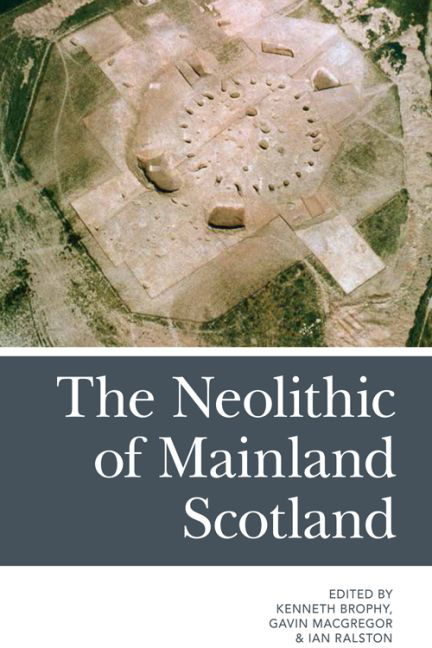Book contents
- Frontmatter
- Contents
- List of Tables and Figures
- Notes on the Contributors
- Acknowledgements
- Foreword: ‘The prehistory of my own lands, the lowlands’
- Part I Scotland's Mainland Neolithic in Context
- Part II Non-megalithic Monuments
- Part III Pits, Pots and Practice
- 9 Life is the Pits! Ritual, Refuse and Mesolithic–Neolithic Settlement Traditions in North-east Scotland
- 10 On Ancient Farms: A Survey of Neolithic Potentially Domestic Locations in Lowland Scotland
- 11 The Neolithic Pottery from Balfarg/Balbirnie Revisited
- 12 Pursuing the Penumbral: The Deposition of Beaker Pottery at Neolithic and Ceremonial Monuments in Chalcolithic and Early Bronze Age Scotland
- Index
12 - Pursuing the Penumbral: The Deposition of Beaker Pottery at Neolithic and Ceremonial Monuments in Chalcolithic and Early Bronze Age Scotland
from Part III - Pits, Pots and Practice
Published online by Cambridge University Press: 15 September 2017
- Frontmatter
- Contents
- List of Tables and Figures
- Notes on the Contributors
- Acknowledgements
- Foreword: ‘The prehistory of my own lands, the lowlands’
- Part I Scotland's Mainland Neolithic in Context
- Part II Non-megalithic Monuments
- Part III Pits, Pots and Practice
- 9 Life is the Pits! Ritual, Refuse and Mesolithic–Neolithic Settlement Traditions in North-east Scotland
- 10 On Ancient Farms: A Survey of Neolithic Potentially Domestic Locations in Lowland Scotland
- 11 The Neolithic Pottery from Balfarg/Balbirnie Revisited
- 12 Pursuing the Penumbral: The Deposition of Beaker Pottery at Neolithic and Ceremonial Monuments in Chalcolithic and Early Bronze Age Scotland
- Index
Summary
Introduction
Beaker pottery has been recovered from a surprisingly large proportion of excavated Scottish Neolithic monuments. Among the approaches taken by those attempting to explain this phenomenon, two are of particular relevance. First, the notion of a newly arrived people or ideology appropriating or staking claims to the ‘ancestral’ monuments of the indigenous past (e.g., A. Shepherd 1994: 270–1, 283; Armit 1996: 94–5); a claim supported, to some extent, by typological observations (I. Shepherd 1986: 9–10; Morton 1990). Second, more recent, interpretive approaches that are exploring the role of memory and the appropriation of older sites in the (re)construction of social relations and identities (e.g., Jones 2003, 2010; cf. Bradley 2002: 82–111; Hingley 2009). While the former approach provides a coherent – albeit at times somewhat reductive – narrative, it is based on a now outdated understanding of the absolute chronological and typo-chronological sequence of Beaker pottery. Post-processual accounts have recognised the ways in which existing monuments were incorporated into contemporary symbolic schema and the techniques by which identity and remembrance were constructed. They have, however, tended to be suspicious of more traditional approaches to comparing and analysing the data, thereby overlooking detailed chronology of depositional practices and variations in the morphology and decoration of the associated Beaker assemblages that are central to the more contextual approach advocated in this chapter (cf. Hodder and Hutson 2003: 180–3). It will be argued that the significance of depositing Beakers at pre-existing ceremonial monuments changed through time and in relation to contemporary grave good traditions and funerary practices in different regions.
In pursuing a more contextual approach, this chapter has three principal sections. First, analysis of Beaker completeness, decoration, morphology and chronology is presented. Second, Beaker deposition at monuments is reviewed in terms of its nature, location and sequence. In the third section, the resulting patterns are reviewed in order to understand the changing nature of Beaker deposition and what it reveals both about inter-regional connections and the variable ways in which Beakers were combined with more local, enduring and ancient, megalithic and non-megalithic monument traditions. It is worth noting at this early stage that I use the term ‘Neolithic and ceremonial monuments’ as shorthand for the monuments considered in this study, although differentiation by monument types is made apparent in the analysis at various points and in the Appendix below.
- Type
- Chapter
- Information
- The Neolithic of Mainland Scotland , pp. 261 - 318Publisher: Edinburgh University PressPrint publication year: 2016

